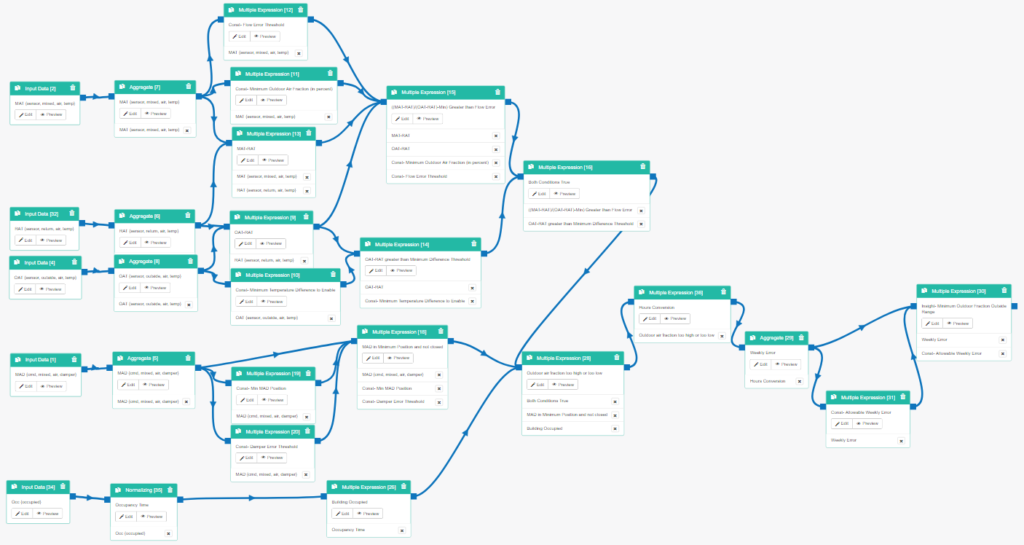Determine if outdoor air fraction is suspect
Applicable Systems
- NIST: APAR2, APAR18
- Primary: AHU, RTU
Objective/Method/Outcome
- Objective: Determine if the actual minimum outdoor air fraction (OAF) is not within the desired minimum, which could be an indication of control damper issues. Based on NIST APAR 2 and 18.
- Method: Calculate the OAF using the MAT, RAT, and OAT. Check if the OAF is outside of a 10% range of the specified minimum OAF during occupied hours.
- Outcome: An insight is generated if the actual OAF is not within the desired minimum OAF for more than 12 hours per week.
Logic
OAF = (MAT-RAT) / (OAT-RAT)</span>
If(MAD == minimum position) { If(OAF - minimum_OAF > Flow_Threshold) { return true; } }

Notes
Within the Logic Flow, the desired minimum air fraction is an important parameter – usually unique to a site. This needs to be changed within the logic flow for this rule to be effective.
Inputs
- MAD {cmd, mixed, air, damper} (Real Trend Log)
- MAT {sensor, mixed, air, temp} (Real Trend Log)
- RAT {sensor, return, air, temp} (Real Trend Log)
- OAT {sensor, outside, air, temp} (Real Trend Log)
- Occ {occupied} (Binary Trend Log)
Parameters
| Parameter | Expression Block Series Number | Description | Default Value (Units) |
|---|---|---|---|
| Minimum Outdoor Air Fraction (in percent) | 11 | The desired percent of Outdoor Air, when the unit is set to draw minimum Outdoor Air. | 5 (%) |
| Flow Error Threshold | 12 | The acceptable air flow deviation tolerance. | 10 (%) |
| Minimum Temperature Difference to Enable | 10 | This is the minimum temperature difference between OAT and RAT needed to enable the rule. Anything less has a chance of creating disproportionately high OAFs. This value is recommended by NIST. | 5.6 (C) |
| Min MAD Position | 19 | This defines the minimum MAD position. Anything less than this value (while the damper is still open) is considered to be “at minimum position” | 30 (%) |
| Damper Error Threshold | 20 | The movement tolerance of the MAD. This is used to define when the MAD is closed and open -everything above this value is considered open. | 5 (%) |
| Acceptable Hours per Week | 31 | The amount of time that is allowable for the unit to have a minimum OAF different than the desired amount. Anything more than that time is considered a fault. | 12 (h) |